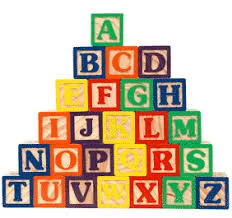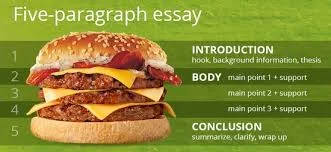I've been reading articles about a big issue: the way we teach writing in school/college is broken. Many students aren't learning to write well. Businesses are complaining loudly.
These articles suggest fixes, most often GETTING BACK TO BASICS. But in these articles, I see a glaring problem: they have a wrongheaded or outdated idea about WHAT THE BASICS ACTUALLY ARE!
Yes, as ridiculous and as boastful as this sounds, I do have a better idea. And it's fairly simple. In fact, I have a few better ideas about helping students learn to write....
Getting reviewers' comments on writing at work, for most staff, feels like a trip to the woodshed. It shouldn't. In an office, we're not in school anymore. Those who review our writing are not our teachers grading us. Writing in the workplace is a team activity. The goal is to produce the most useful documents--of all kinds--possible. So, please slaughter my writing, please!
The standard "5-Paragraph Essay" most of us have heard of or been required to do in a high school or college writing class is under attack: It's formulaic. It zaps creativity. It's too rule-based. It lacks sophistication. I'd agree that it is old fashioned. Some trace its roots to the school marms of the 19th century. Its roots, according to Matthew Nunes in his essay "The Five-Paragraph Essay: Its Evolution and Roots in Theme-Writing," trace back to the Roman and Greek rhetoricians several centuries B.C.A.
I trace its roots much further back than that, all the way to the architecture of the human mind.
We have a need
to say something big,
to back it up with examples,
to elaborate with small details,
to defend what we have to say from nay-sayers, and
to reenforce at the end what we just said.
Nobody invented the structure of the 5-Paragraph Essay. It's ingrained in our brains...always has been.
So why would I wish to say good-bye (in writing classes) to such a fundamental idea?
I actually don't reject it outright. I just put it offstage until later...until students understand what writing is really about. Let me explain and suggest a replacement.
Our HOCs and LOCs integrated system for teaching writing is a simple strategic framework that provides important critical-thinking and writing concepts and skills for students and workers of all ages. It seeks to demystify writing, treating it as a systematic skill that can be learned, much as you would learn golf, mountain climbing, cooking, gardening, or photography. We call it THE NEW BASICS....where the reader/customer is always the focus.
MINDFULNESS, for most people, conjures images of meditation--eyes closed, relaxed, concentrating on each breath in a peaceful environment...
That's fine. Who am I to argue with an ancient, healthy practice? (Some of the earliest written records of meditation [Dhyana], come from the Hindu traditions of Vedantism around 1500 BCE.)
But wait a sec....doesn't MINDFULNESS imply how we interact with other people and with our environment? Doing yoga and closed-eye meditation, as I said, is awesome, but what about practicing mindfulness in our everyday contacts at work, under stress, with co-workers and customers? Can't do that with eyes closed very easily.
Did you ever consider the on-the-job writing you do every day as an opportunity to practice mindfulness? Interaction with others is where the rubber meets the road when it comes to being mindful. So what better way to practice than through our daily workplace writing...or, as I think of it, eyes-wide-open meditation?
If you’re like most people, when I ask you to define CONTENT in a piece of writing, you’d say it’s the information, the facts, the details, the data conveyed in the writing. That’s what almost everyone believes, and everyone is about 25% correct.
CONTENT is better thought of as one of seven systems operating in any piece of writing. CONTENT is a system with four main components. Knowing these four components will help you generate CONTENT that’s more useful to your reader. Here’s how….
If you’ve followed this blog, you know that my NUMBER 1 complaint about how writing is taught in school/college/grad school is that most of the writing students are assigned to do has no real audience beyond the teacher. But when students go to work, they must always write to a real person, usually many real people.
The writing skills students learn in school, writing for no real audience, fall short when they go to work. Having a real reader makes writing suddenly important, risky, valuable, and, for many, frightening.
So please have your students get a lot of practice writing to a real person. Students from the first grade through grad school need to practice, practice, practice, and practice some more writing to a real person. Actually, it’s fun.
Let me first say what they’d learn from this real practice. And then let me give some suggestions for real-writing assignments….








